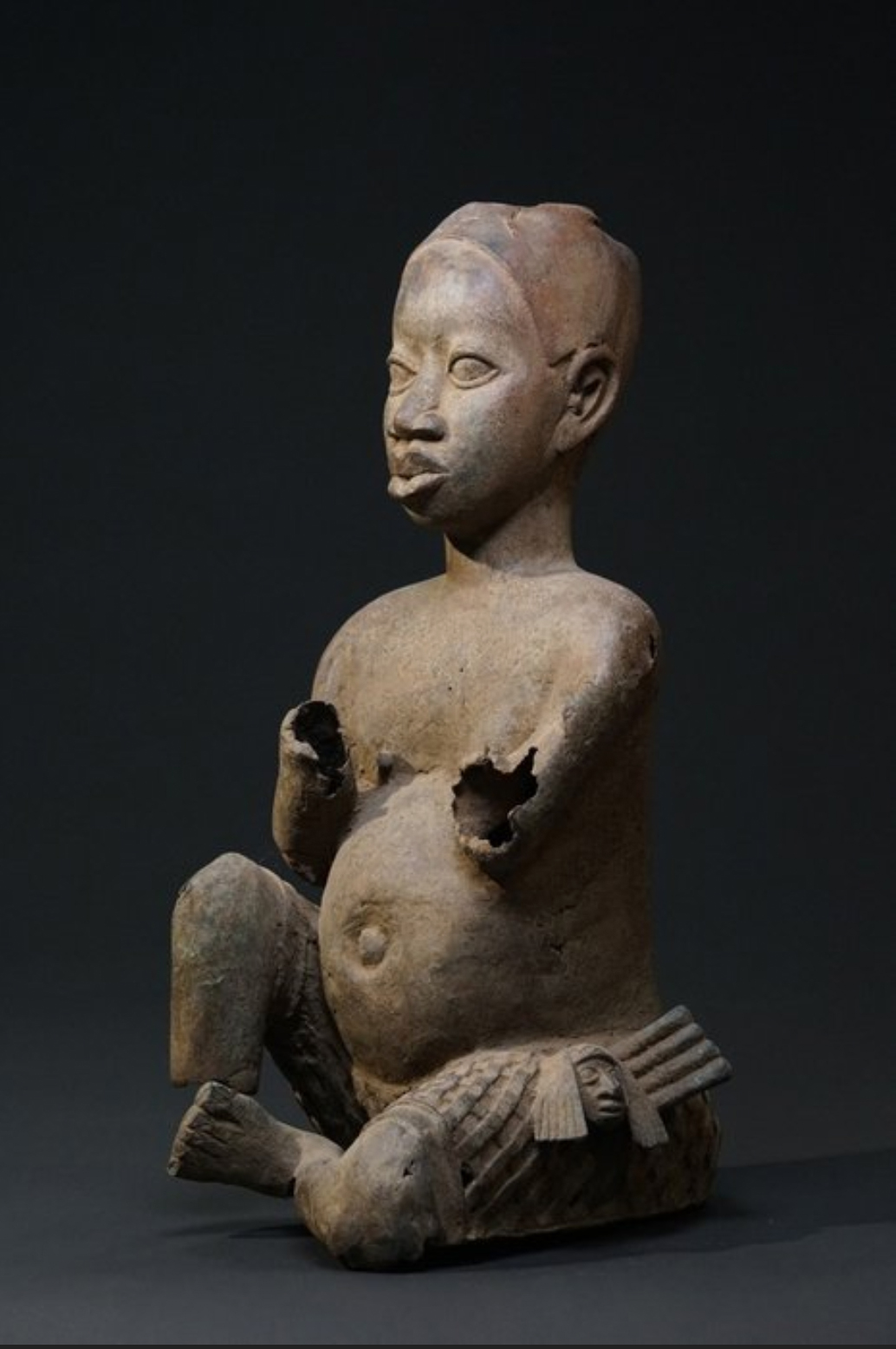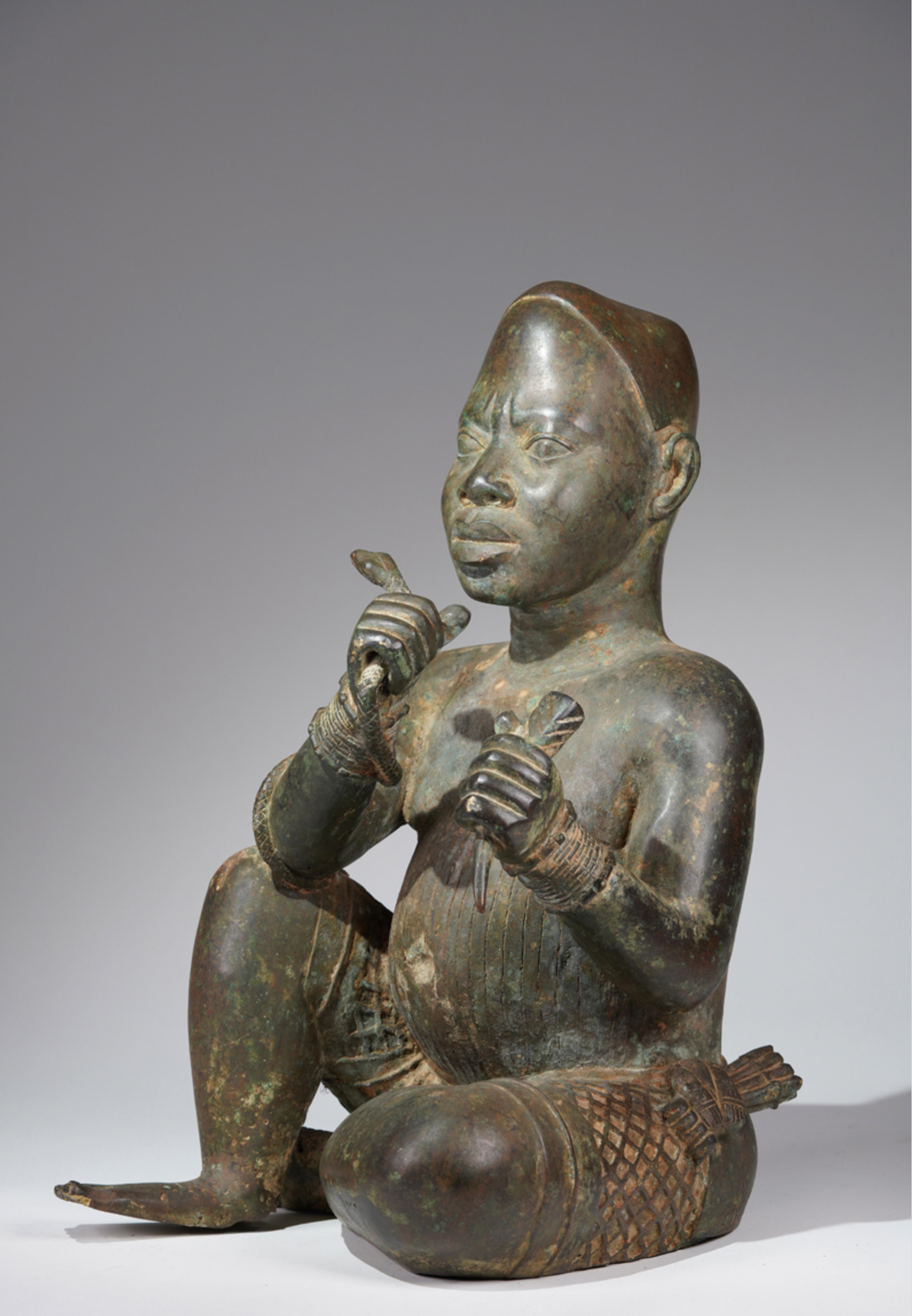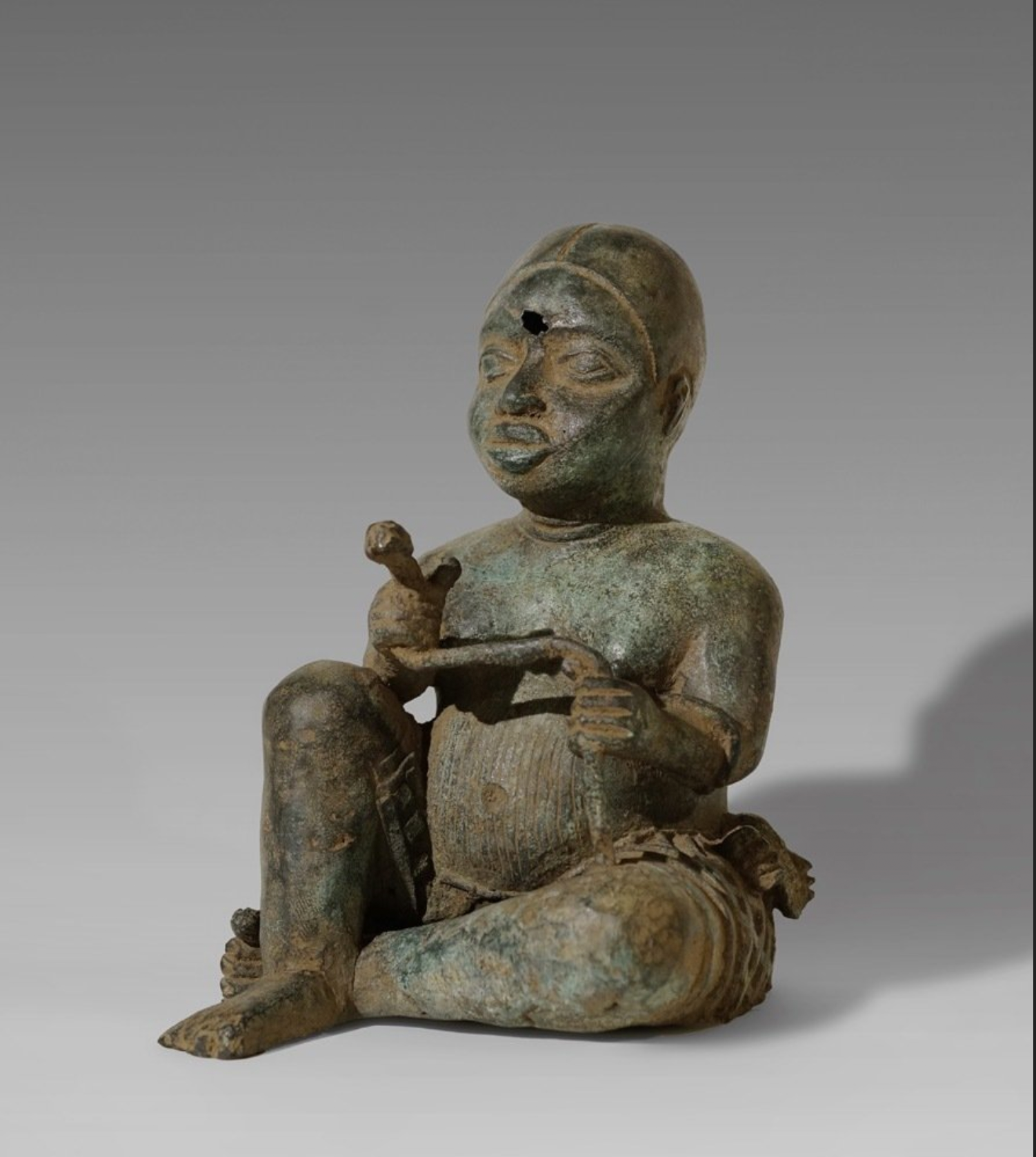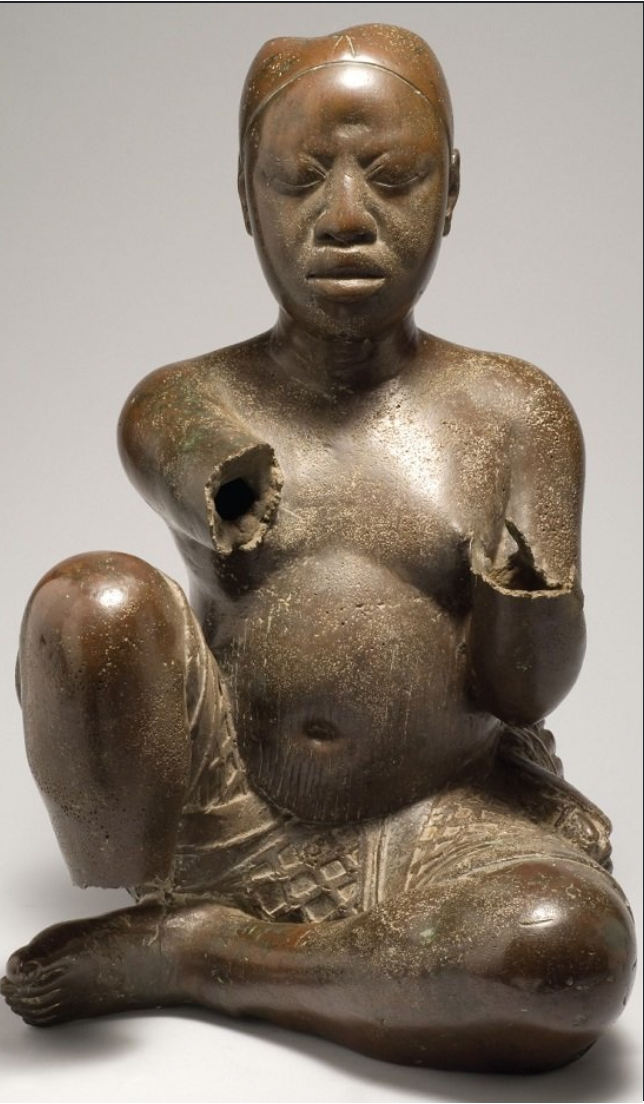|
A fragmentary Bronze sculpture in the style of Tada with an extremly smoozh patina. The related famous exemplare was obviously deliberately destroyed, which is probably due to the influence of militant Islamism, which has now found its continuation in the reign of terror of Boko Haram and dominates this region. However, this reign of terror has now stopped destroying high-quality works of art and instead sold them to the art trade because they can fetch a considerable amount of money. Even though this sculpture was in a well-known collection in Togo for many years, it is likely that it is closely linked to the decline of animism and the aggressive advance of an intolerant Islamism. The condition of the surface suggests that it was in the ritual use - like mentioned above - for many years., provenance Aboulaye Ousmane, called Abdou Barré, Lomé Togo, it was since a long time in his collection.
Another fragmentary Tsoede broze, we collected a couple of years ago. "This is without doubt the suprem masterpiece of the Ife smiths´art. Its proportions are naturalistic, whereas normally the head quarter or more of the height of the figure. The limbs and usualyly the torso are generally no more than cylinders, but here legs and remaining parts of the arms are very Ifelike. The figure wears a wrapper that is overlain with a net of beads. On the left hip a shash is tied round a folded cloth, perhaps thw concerns of the wrappers. (There is a similar hip ornament in terracotta form a life size figure from the Iwinrin Grove). Originally the right foot may have projected below the level of the base, ehich promted Willim Fagg to suggest that it might have been unrended to sit on a round stone throne (as cat. 5.66)... Until recently this pice was kept in a shrine in the Nupe village of Tada on the river Niger 192 km north of Ife, where the villagers took it downto the riverevery Friday and scrubbed it with river gravel to ebsure the fertility of their wives and of the fish on which they live.. This accounts for its smoothed appearance , Bernard Faggpersuaded the villagers thar they were destroying the sculpture and with it the fertiliy they were trying to promote... It is not clear why this piece and several others were found so far north. it may well be that its location indicetes the ancient northern frontier of the kingdom of Ife. FW, Bibliography: Willet, 1967, pl 8 A group of nine bronze sculptures had for a long time been known to exist in two villages on the River Niger, at Tada and on Jebba Island. The bronzes are referred to as the Tsoede bronzes because oral tradition says that the founder of the Nupe Kingdom, King Tsoede, who escaped from Idah in a bronze canoe, distributed these bronzes on his way to founding the present Nupe Kingdom which is believed to date from the sixteenth century. Source: Nigerianhouse |
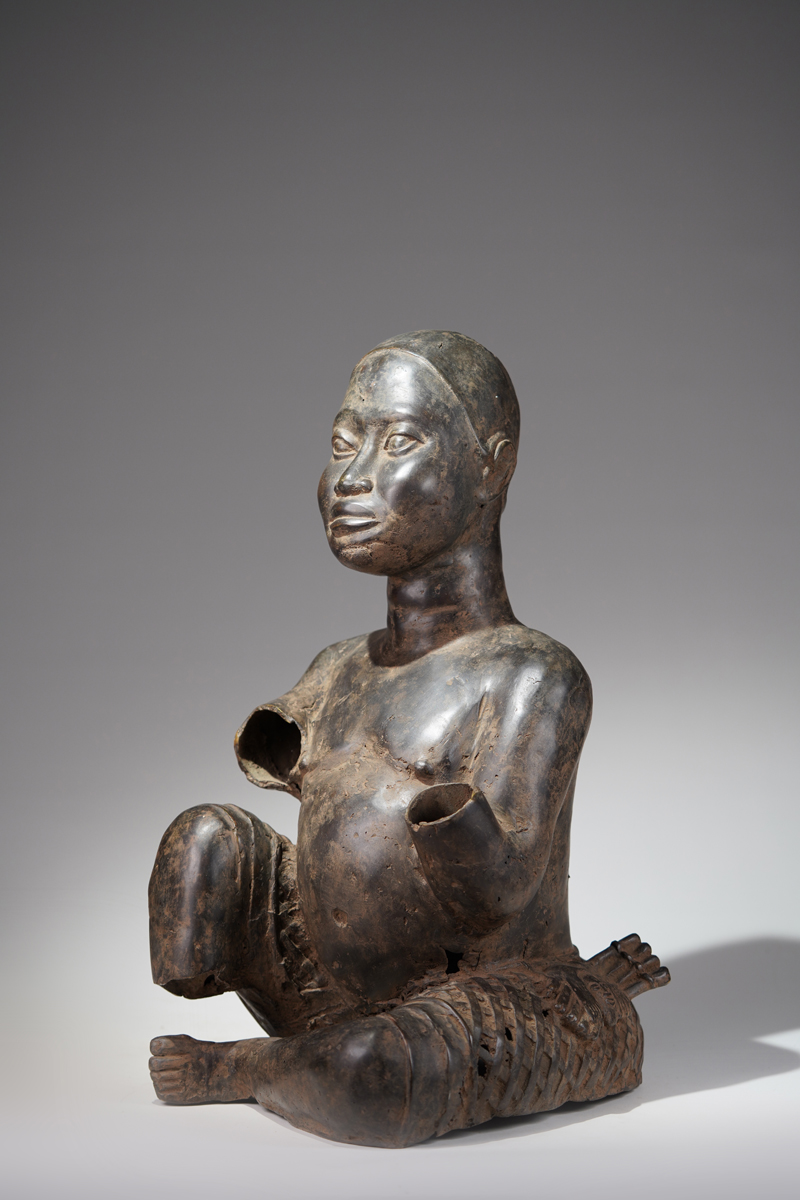 photo: wolfgang-jaenicke.com, for more information, please write us an e-mail with the identification number of the photo identification no. XBD179657.jpg We know only two exemplares, one in an American private collection and one in Europe, which don´t have signs of violance like the well known, in many books published fragmentary exemplare.
It is important that such high-value works of art are protected from further destruction and not left at the mercy of Islamist terrorists. Such objects do not belong on the black market, but this dilemma should be discussed openly with all those who are committed to protecting cultural heritage. This object was not stolen and is coming from athe old private collection of the Heritage of El Hadji Ibrahim Abdoulaye, Cotonou, Benin, who passed away in 2022.
|
The Tsoede (also called Tada-bronzes) are linked to the Benin Kingdom, one of the great African kingdoms, known for its advanced urban planning, political structure, and art. The bronzes were likely produced by the skilled metalworkers who inhabited the area and are now considered a key part of the rich artistic heritage of the Benin Empire. The works also hold substantial historical value, as they often served ceremonial and symbolic purposes.
Is it conceivable that the damage to the figure right presented here was intentional? The deformations of the arm swamps show more than mere erosion. They show - at least on the arms - clear signs of violence. Snakes have been a symbol of power and domination for centuries, especially in traditional Africa. If a character is deprived of this symbol, it loses its magic power. Couldn't the missing left foot be interpreted in a similar way, in that the figure has lost its contact with the earth by breaking off the foot? This could perhaps be interpreted as another sign of de-ritualization. sold Height: 60 cm available on www.wolfgang-jaenicke.com |
